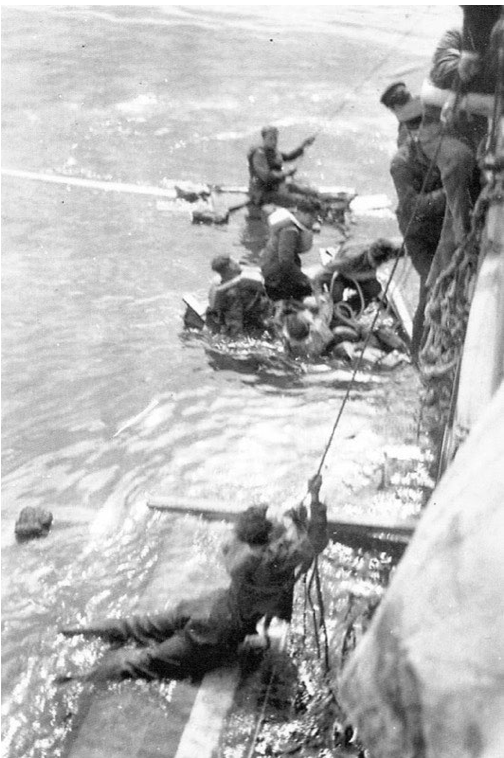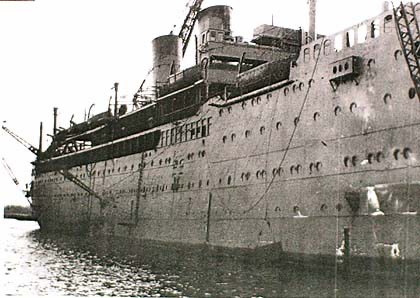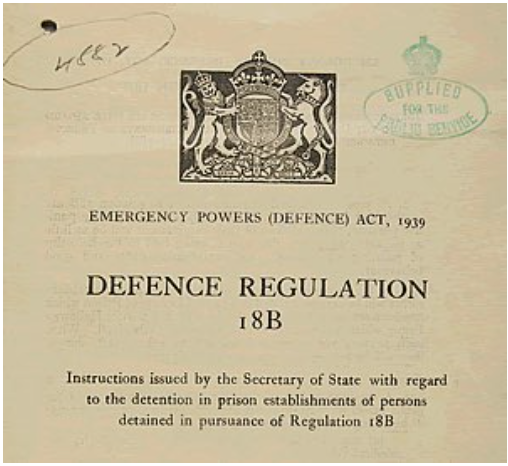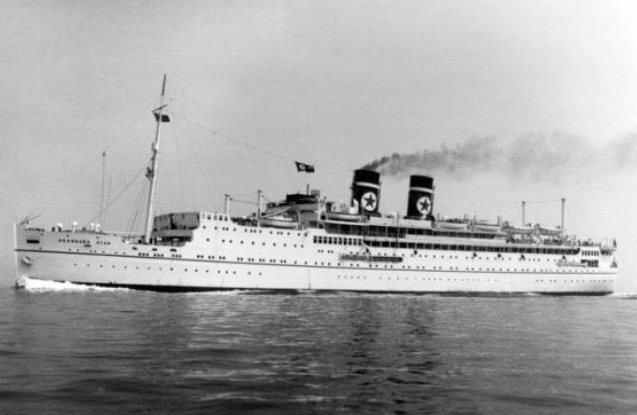
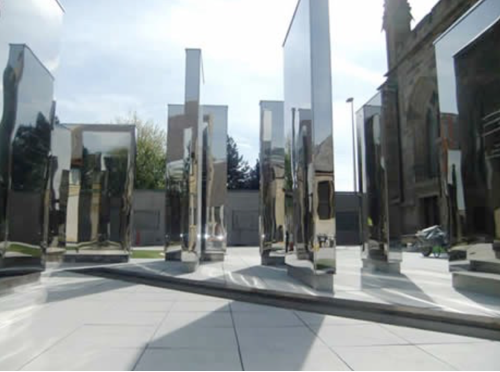
Non Vi
Scorderemo Mai
Alfonso Pacitti
updated January 2024
The wreck of the Arandora Star is located at 56°30′N 10°38′W off the northwest coast of Ireland. In a twist of fate, the U-boat that sank the ship, U-47, itself sank nearby on 7th March 1941. In the weeks following the Arandora Star's sinking, many bodies of those who perished were carried by the sea to various points in Ireland and the Scottish Hebrides. Blown by a north-westerly gale, it took almost a month for bodies of the dead from Arandora Star to reach land. Throughout August, bodies were washed up along a six hundred mile stretch of coast from the western isles of Scotland to North Mayo in Ireland.
The first was 71-year-old Ernesto Moruzzi, who was found near Burtonport. Four others were found on that same day, 30th July. During August 1940, a further 213 bodies were washed up on the Irish Coast, 35 were identifiable as being from the Arandora Star. A further 92 unidentified were also most probably from the Arandora Star. In the small graveyard of Termoncarragh, County Mayo, Luigi Tapparo, an internee, from Edinburgh, and John Connelly, a Lovat Scout, lay buried, side-by-side; nationality did not matter in the icy waters of the Atlantic.
There are 14 known sites in the west of Scotland and Northern Ireland where bodies of victims
from the Arandora Star are buried. The identity of most of these victims is not known.
The location of these burial sites are indicated below.
Scotland:
Hallan Cemetery, Dalabrog, South Uist
St Barr Old Churchyard, Eoligarry, Barra
St Brendan’s Burial Ground, Barra
Kilchattan Churchyard, Isle of Colonsay
Island of Oronsay
Bowmore New Churchyard, Isle of Islay
Port Ellen Churchyard, Isle of Islay
Doune Cemetery, Girvan
Ireland:
St Thomas CoI Churchyard, Rathlin
Carndonagh Cemetery, County Donegal
Tory Island
Clonmany Cemetery, County Sligo
Easkey Cemetery, County Sligo
Termoncarragh Cemetery, County Mayo
Memorials
A memorial chapel was built in a cemetery in Bardi, Italy, home town of 48 of the dead. Bardi has also named a street in memory of the event: Via Arandora Star.St Peter's Italian Church in Clerkenwell, London, the main church in London serving Italian immigrants since Victorian times, unveiled this memorial plaque in 1960. Each year, a mass is held on the first Sunday in November, close to the anniversary of the unveiling of the plaque.
In 2004, the Italian town of Lucca erected a monument to 31 local men lost in the sinking, located in the courtyard of the museum of the Paolo Cresci Foundation for the History of Italian Emigration.
The Scottish Island of Colonsay unveiled a memorial on 2nd July 2005, the sixty-fifth anniversary of the tragedy, at the cliff where the body of Giuseppe Delgrosso was found.
A bronze memorial plaque was installed on 2nd July 2008 at the Church of Our Lady and St Nicholas, Liverpool. It has now been relocated to the Pier Head in front of the old Mersey Docks and Harbour Board.
In 2009, on the 69th anniversary, the Mayor of Middlesborough unveiled a memorial in the town hall commemorating the town's thirteen interned Italians held in cells there, prior to deportation and death on the Arandora Star's final voyage.
On 2nd July 2010, on the 70th anniversary, a new memorial was installed in St David's Catholic Metropolitan Cathedral, Cardiff, by the Arandora Star Memorial Fund in Wales.
A memorial garden dedicated to those Scots-Italians who died in a wartime tragedy was formally opened at St Andrew’s Cathedral, Glasgow on 16th May 2011. 94 Scots-Italians were among the 800 victims of the attack. The silver-mirrored central monument, the largest in the world dedicated to the Arandora Star tragedy, stands next to a 200-year-old olive tree which was gifted by the people of Tuscany. At the opening of the Glasgow memorial garden was Giulia Chiarini, the architect from Rome who designed the garden and monument, and mayors of the towns from which most Scottish Italians came; Barga and Pistoia in Tuscany and Picinisco and Filignano in the Lazio region.
" Archbishop Conti said the monument was an interactive installation designed to encourage people:
“to reflect on the great mysteries of life, death and resurrection.”
Mr Alex Salmond, Scotland’s first Minister, who helped launch the project, said:
"This oasis of peace and contemplation at St Andrew's Cathedral is a magnificent tribute to the those who tragically lost their lives aboard the Arandora Star during the Second World War and to the part the Scots-Italian community plays in the rich tartan fabric of our nation."
Pacitti on the Arandora Star
The memorial contains the names of all of the Italian members of the Scottish community who perished in the tragedy and of course includes my relatives; Alfonso Pacitti, Carmine Pacitti and Silvio Bertolini. A list of all those who died on the Arandora Star is available on the internet from various sites and also on this website
here .
There were two Pacitti survivors: Pasquale Pacitti, my grandfather Alfonso's younger brother, and Alessandro Pacitti, son of Domenico Pacitti. They were both rescued by the crew of the St Laurent and taken back to Glasgow before being rembarked on the SS Dunera and sent to Internment Camps in Australia. Pasquale was to die in one of the camps in Australia. Alessandro was able to return to Glasgow at the end of the war.
The internment and deportation of so many innocent people and the resultant unnecessary death of over 400 of them was surely a shameful episode in British history. One of the very few elected MPs who had the courage to speak out was Major Victor Cazalet, MP for Chippenham, Wiltshire. During the House of Commons debate of Internment, which also covered the Arandora Star tragedy, on 22nd August 1940, Hansard reports him:
“No ordinary excuse, such as that there is a war on and that officials are overworked, is sufficient to explain what has happened.
Horrible tragedies, unnecessary and undeserved, lie at the door of somebody; and I want the Minister, if he will, to say that he realises that these mistakes which he has admitted have in certain cases resulted in appalling and most regrettable tragedies. We have, unwittingly I know, added to the sum total of misery caused by this war, and by doing so we have not in any way added to the efficiency of our war effort.
Frankly, I shall not be happy, either as an Englishman or as a supporter of this Government, until this bespattered page of our history is cleaned up and rewritten.”
